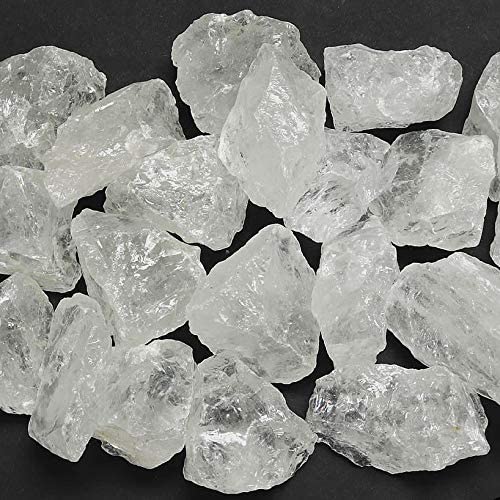New here?

New to rockhounding and don't know where to start? Not to worry, we will show you the ropes. Click below to head over to our "Getting Started" guide
Getting StartedRocks & Minerals In Oregon



Oregon rockhounding maps to hunt for crystals, gemstones, minerals, and ores. Rockhounding in Oregon offers enthusiasts a chance to discover a diverse range of gemstones, minerals, and fossils. The state's rich geological history is reflected in its abundant rockhounding sites, from the Oregon coast to the high desert. Popular finds include thundereggs, sunstones, agates, and petrified wood.
Recommended Rockhounding Tools

Discover the perfect tools for your next adventure-whether you're a beginner or seasoned prospector. Find gear tailored to your location, skill level, and the gems you're hunting.
See RecommendationsPlease always bring appropriate attire and do research before venturing out to rock hunt and crystal hunt. Also, be sure to verify that the location you want to hunt at is available for public access. Rockhounding.org does our best to verify, but it is your responsibility to verify as well because sometimes things change. We are not liable for any actions you take from the information you find on this site.
Snacks & Hydration

Energy Bars
Stay energized with the best energy bars for your rockhounding adventures.
Our FavoritesMust Have Rockhounding Tools
Keeping accurate records of Rockhounding & Gemstone Hunting Locations is a community effort! Know of a good spot that is missing from our maps? Feel free to submit it below. Thank you for your contributions to the rockhounding community!
Popular Rocks, Crystals, & Gemstones In Oregon
-
 Jasper
JasperJasper is a versatile gemstone with a variety of colors, and Oregon is well-known for its high-quality green jasper.
Read More -
 Sunstone
SunstoneOregon sunstone, known for its unique iridescent colors, can be found in the southeastern part of the state.
Read More -
 Quartz
QuartzQuartz is a versatile clear crystal found in many locations throughout Oregon, including the Cascade Mountains.
Read More -
 Thundereggs
ThundereggsThundereggs, which are unique geological formations containing mineral deposits, can be found in various locations across Oregon.
Read More -
 Holley Blue Agate
Holley Blue AgateHolley Blue agate is a rare and beautiful blue gemstone found in the Holley area of Oregon.
Read More -
 Carnelian
CarnelianCarnelian is a striking red gemstone that can be found in various locations throughout Oregon.
Read More
Popular Rock Hunting Areas In Oregon
-
 Dust Devil Sunstone Mine
Dust Devil Sunstone MineThe Dust Devil Sunstone Mine in Plush, Oregon is a popular destination for rockhounds looking to find Oregon sunstones.
Read More -
 Richardson's Rock Ranch
Richardson's Rock RanchRichardson's Rock Ranch in Madras, Oregon is a favorite among rock enthusiasts, offering opportunities to dig for thundereggs and other minerals.
Read More -
 Lucky Strike Mine
Lucky Strike MineThe Lucky Strike Mine in Mitchell, Oregon offers a unique experience for rock collectors looking to mine their own gemstones, such as jasper, agate, and quartz.
Read More -
 Ochoco National Forest
Ochoco National ForestOchoco National Forest in Central Oregon is known for its abundance of rockhounding sites, with a variety of minerals and crystals such as quartz, agate, and jasper available to collectors.
Read More -
 Glass Butte
Glass ButteGlass Butte, located in Central Oregon, is a popular site for collecting various types of obsidian, a volcanic glass prized for its beauty and rarity.
Read More
Geology of Oregon
Oregon's diverse geology is the result of millions of years of geological processes, including volcanic activity, tectonic movements, and erosion. The state's geologic history can be traced back more than 200 million years ago to the Mesozoic Era when the western margin of North America began to interact with the Pacific Oceanic Plate.
During the Jurassic and Cretaceous periods, subduction of the oceanic plate under the North American continent led to the formation of volcanic island arcs and the accretion of marine sedimentary rocks. The ancestral Klamath and Blue Mountains in eastern Oregon are remnants of these ancient island arcs.
In the late Cretaceous and early Tertiary periods, Oregon experienced extensive volcanic activity. The Cascade Range, a volcanic arc extending from northern California to British Columbia, began to form during this time. Oregon's iconic Crater Lake is an example of a volcanic caldera formed by the collapse of Mount Mazama about 7,700 years ago.
Over millions of years, erosion and sedimentation shaped Oregon's landscape further. The formation of the Columbia River Basalt Group, one of the largest flood basalt provinces in the world, occurred between 17 and 6 million years ago. These extensive lava flows covered parts of Oregon, Washington, and Idaho, and are responsible for the region's distinctive basalt cliffs and plateaus.
In the Pleistocene Epoch, starting around 2.6 million years ago, glacial activity played a significant role in shaping the state's topography. Glaciers carved out valleys and deposited sediments, while the periodic flooding of glacial Lake Missoula led to the formation of the Columbia River Gorge. Oregon's geology continues to evolve today, with ongoing volcanic activity and tectonic movements shaping its landscape and providing valuable resources for rockhounds and geologists alike.






